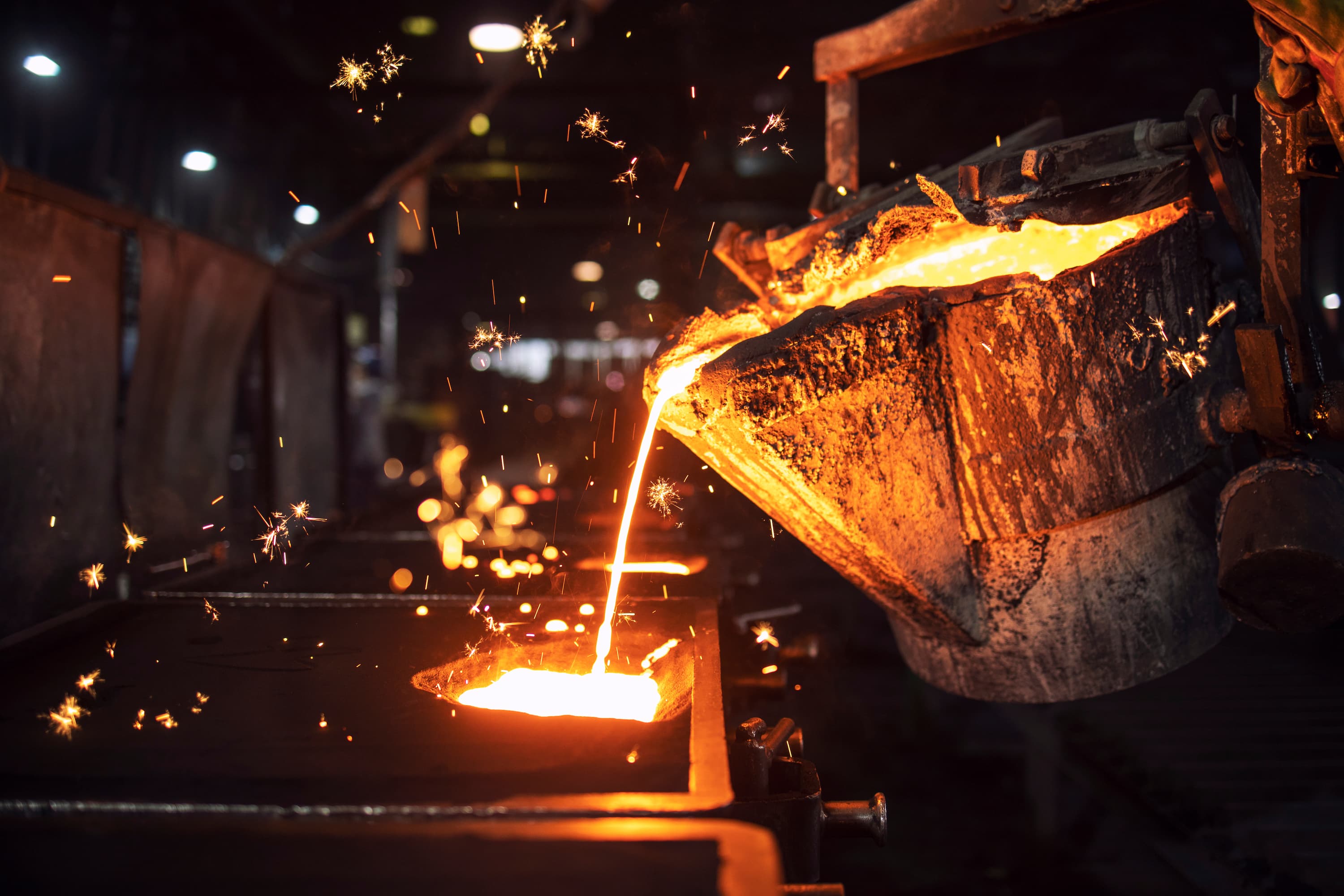Low-pressure die casting defects waste resources because they increase waste and decrease the quality of finished parts, costing your organization time and money.
While some defects in low-pressure die casting are more frequent than others, these flaws can be avoided using relatively simple techniques. Knowing what to look for might help you anticipate and avoid some of the most prevalent problems.
What is Low-Pressure Die Casting?
Low-pressure die casting uses pressure instead of gravity to fill a mold cavity with molten metal. The pressure is held constant until the metal solidifies inside the die. This method of metal casting reduces oxide formation and porosity, typically resulting in superior casting with exceptional strength and dimensional accuracy.
Common Defects in Low-Pressure Die Casting
Common defects in these cast parts can be broken into two categories — internal and superficial — depending on where they occur in the part.
Internal Defects
By their nature, internal defects can be harder to spot when inspecting a finished casting. These defects occur within the part and are not apparent during a visual inspection. Some of the most common internal defects are:
- Inclusions
- Gas Porosity
- Shrinkage Porosity
Because these occur within the part, they are typically only identified after machining the part or through X-ray identification. Internal defects can significantly reduce the finished casting's structural integrity and must be avoided.
Superficial Defects
Because these defects occur on the surface of the casting, superficial defects are typically easier to catch during a visual inspection. Although they can be easier to find, superficial defects can be detrimental to the quality of the finished part. Superficial defects must be dealt with to ensure a high-quality casting. Some of the most common superficial defects are:
- Blisters
- Cracks
- Cold Laps
- Laminations
- Lakes
Preventing Common Defects in Low-Pressure Die Casting
Being aware of common defects is the first step toward preventing them. Using best practices for mold design, casting parameters, and cleaning processes often eliminates the bulk of defects common to low-pressure die casting.
Inclusions
Inclusions are irregularly shaped holes inside the cast part caused by contaminants in the molten metal. These contaminants weaken the strength of the final part and should be prevented.
Causes
- Low furnace charge purity
- Improperly cleaned die cavity
- Improper mold-release agent
- Polluted molten metal alloy
Solutions
- Ensure purity of furnace charge
- Use a well-mixed, high-quality mold-release agent
- Purify metal liquid and remove slags
- Clean ladles and die cavities
Gas Porosities
Similar to inclusions, gas porosities are caused by pockets of vapor or gas caught inside the molten metal instead of solid contaminants. These pockets of gas bubbles reduce the strength of the cast part.
Causes
- Hydrogen in the molten metal
- Gases involved during the filling
- Gases released from the mold.
Solutions
- Keep alloy ingots dry and clean before smelting
- Prevent overheating of the molten metal
- Keep casting parameters within reasonable ranges, especially injection speed
- Follow best practices for sprue and runner design, ensuring their lengths are greater than 50mm
- Use high-quality mold-release agents
- Use mold flow analysis like THERCAST® to predict mold performance in the design process
Blisters
Just like on human skin, blisters on a cast part are visually similar. Caused by gas expansion under the surface, these bulges on the part surface are similar to gas porosity defects.
Causes
- Overheated die temperature
- Insufficient pressure-holding time
- Low-quality mold-release agent or insufficient blowing time after spraying the mold-release agent
- Poor venting performance of the gating system
- Gases involved in the injection process
Solutions
Optimizing the mold design, temperatures, and mold-release agent usage helps reduce the frequency of blisters.
- Optimize release agent quality and usage
- Increase pressure-holding time
- Adjust casting parameters like injection speed
- Lower die and smelting temperatures
Cracks
Just as it sounds, cracks are linear or irregular appearances on the cast part's surface. Cracks tend to increase in size when forces are applied to the part, significantly decreasing the strength of the finished part.
Causes
- Poor alloy mix, inadequate casting parameters, and inferior mold design can all cause cracking.
- Too low of die temperature
- High Zn element concentration in an Al-Si alloy, high Mg element concentration in Al-Mg alloy or high concentration of Fe element
- Non-uniform wall thickness in the cast part
- Contaminants in mold decreasing the plasticity of parts
Solutions
- Ensure the correct elemental composition of the alloy used in smelting
- Improve die temperature and casting parameters
- Adjust mold design to ensure uniform wall thickness
Prevent Defects in Low-Pressure Die Casting
Many of the most frequent defects in low-pressure die casting manufacturers can avoid castings with reasonable casting conditions, quality mold design, and thorough cleanliness. Knowing what to check for is the first step in preventing flaws.
Keep an eye out for the most common low-pressure die casting defects, or take steps to avoid them altogether. Find out how casting simulation software prevents inaccuracies that increase waste and impact the quality of cast parts by getting in touch with Transvalor Americas.


